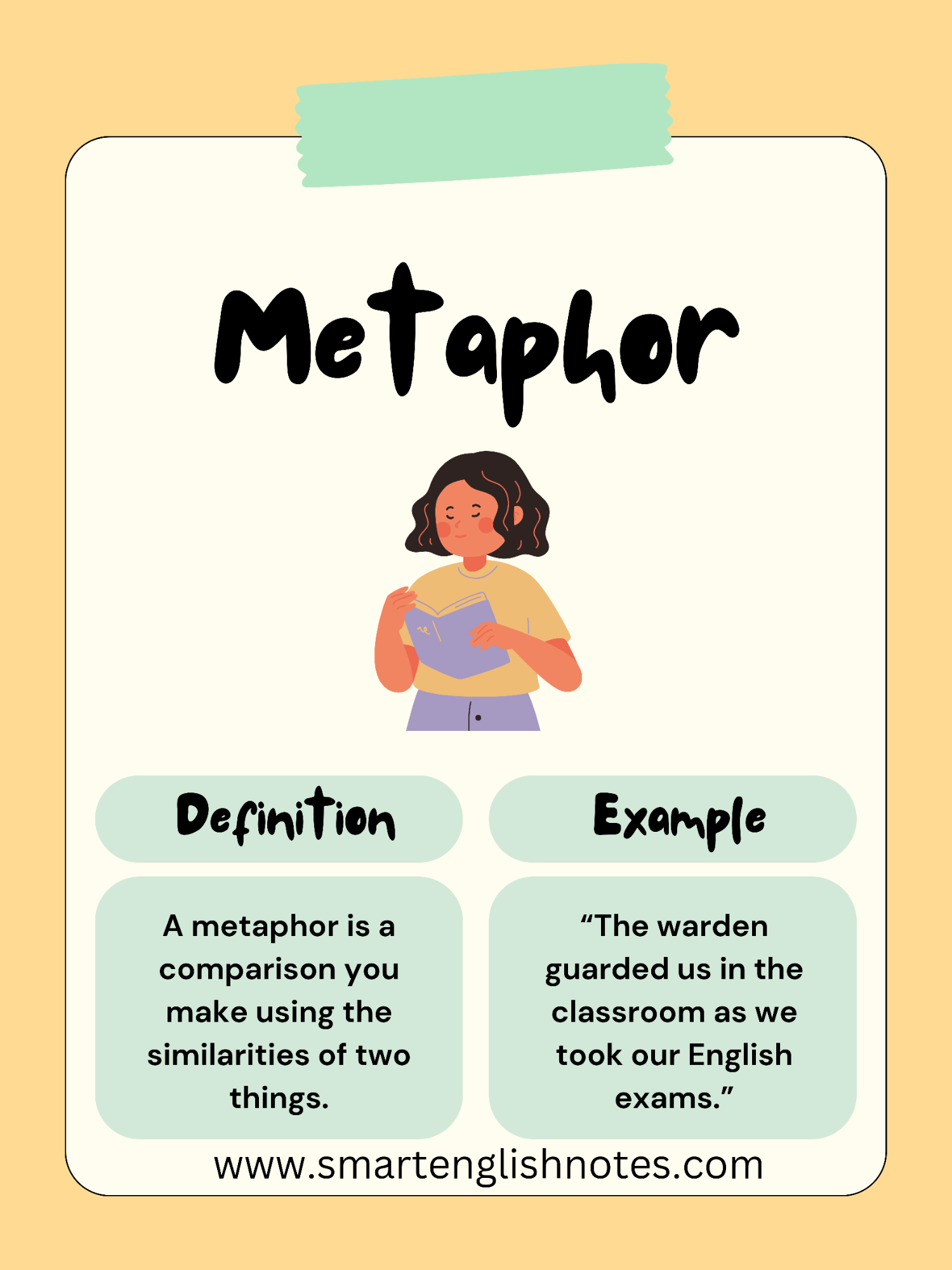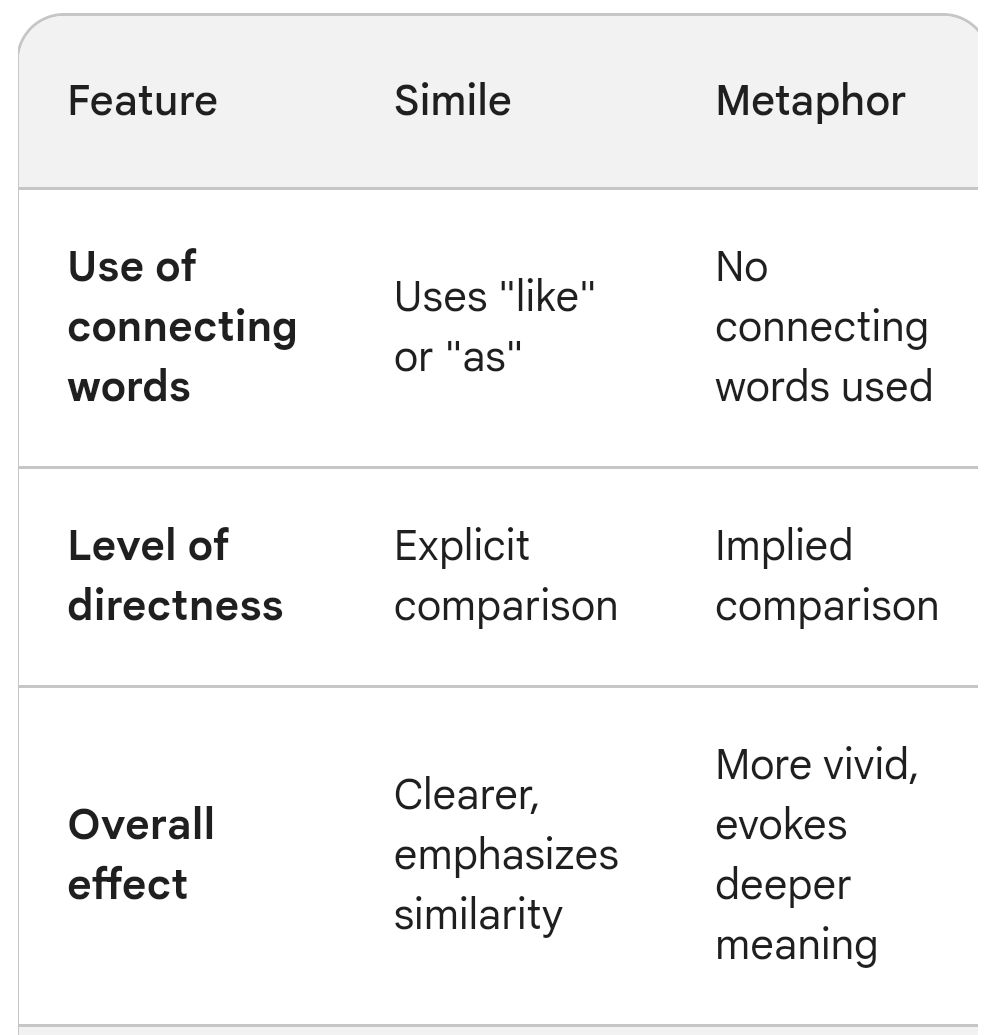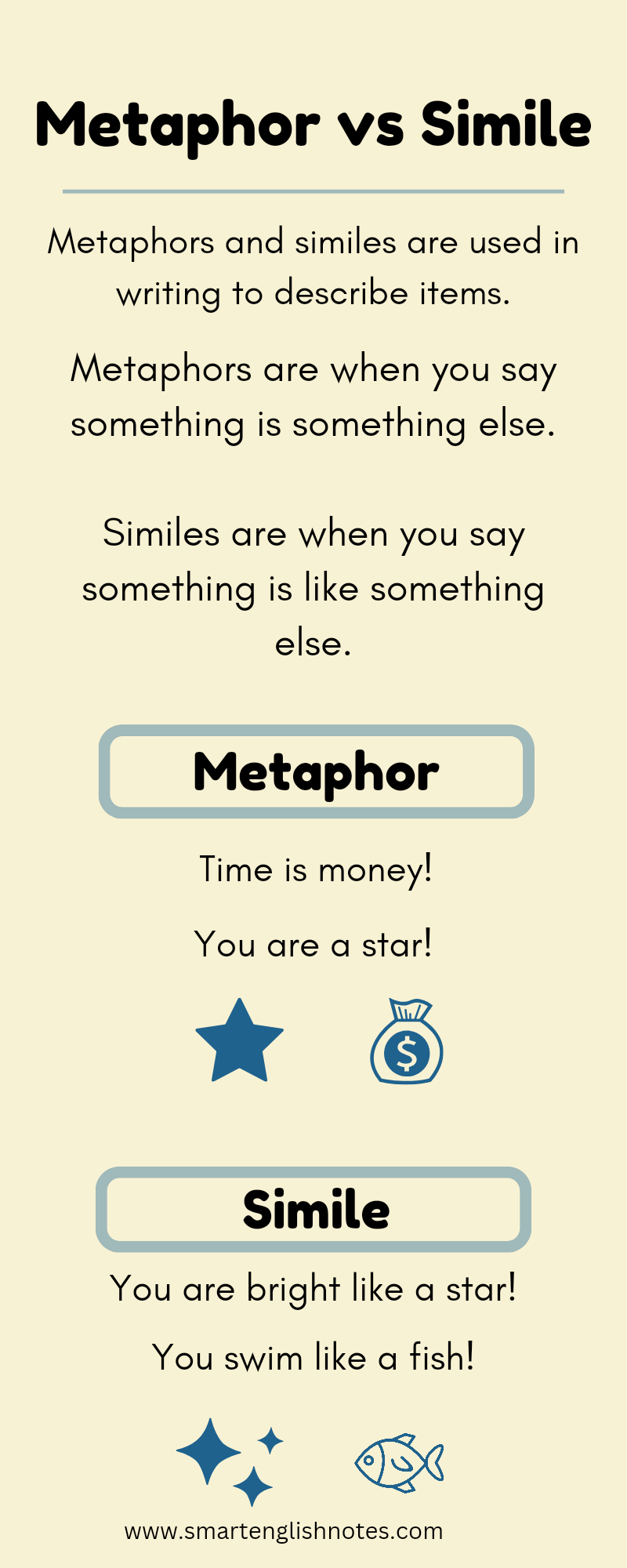Unveiling the Magic of Comparison: Simile vs. Metaphor
The English language is a treasure trove of tools for expressing ourselves vividly and effectively. Among these tools, figures of speech hold a special place, allowing us to paint pictures with words and add layers of meaning to our communication. Two such figures of speech, often misused or confused, are simile and metaphor. Both deal with comparison, but understanding their subtle differences can elevate your writing and communication skills to new heights.
Simile: Comparing with Clarity
Imagine a child describing a bright yellow sun. They might say, “The sun is like a giant ball of gold.” This is a simile. A simile explicitly compares two things using the words “like” or “as”. It acts as a bridge, helping us understand something unfamiliar by relating it to something familiar.

Similes are often used in:
- Literature: “Her eyes twinkled like stars in the night sky.” (J.K. Rowling, Harry Potter)
- Everyday speech: “He ran as fast as the wind.”
- Popular culture: “Life is like a box of chocolates, you never know what you’re gonna get.” (Forrest Gump)
The use of “like” or “as” makes the comparison clear and direct, leaving no room for ambiguity. This can be particularly helpful when introducing complex concepts or unfamiliar ideas.
Metaphor: Embracing Directness
Now, imagine the same child, filled with awe, simply stating, “The sun is a giant ball of gold.” This is a metaphor. Unlike a simile, a metaphor directly states that one thing is something else, implying a comparison without using explicit connecting words.

Metaphors are often used in:
- Literature: “All the world’s a stage, And all the men and women merely players.” (William Shakespeare, As You Like It)
- Everyday speech: “He is the rock of our family.”
- Popular culture: “Time is money.”
Metaphors create a stronger sense of identification between the two things being compared. They can be more figurative and evocative, inviting the reader to engage with the comparison on a deeper level.



